Technical Advice in the Outdoor Industry
This week has been mostly spent going to the different Outdoor Centres I am Technical Advisor for and giving them “Technical Advice”. What is Technical Advice though!?! Many places may need an experienced eye to help them write their Risk Assessments, Operating Procedures, carry out “PPE” equipment checks and conduct staff training, amongst many other things. What makes a Technical Advisor? Well it’s someone with the highest level of qualifications and extensive knowledge in their specialist area. Alongside this, a high level of professionalism and personal continual professional development, as well as being highly experienced at delivering staff training and assessments and being up to date with the current best practise. So why do centres need Technical Advice? As well as the reasons stated above, often staff are working on sessions that they are not technically qualified to run, or that are outside of the remit of the qualifications that they do have. This is where I come in!
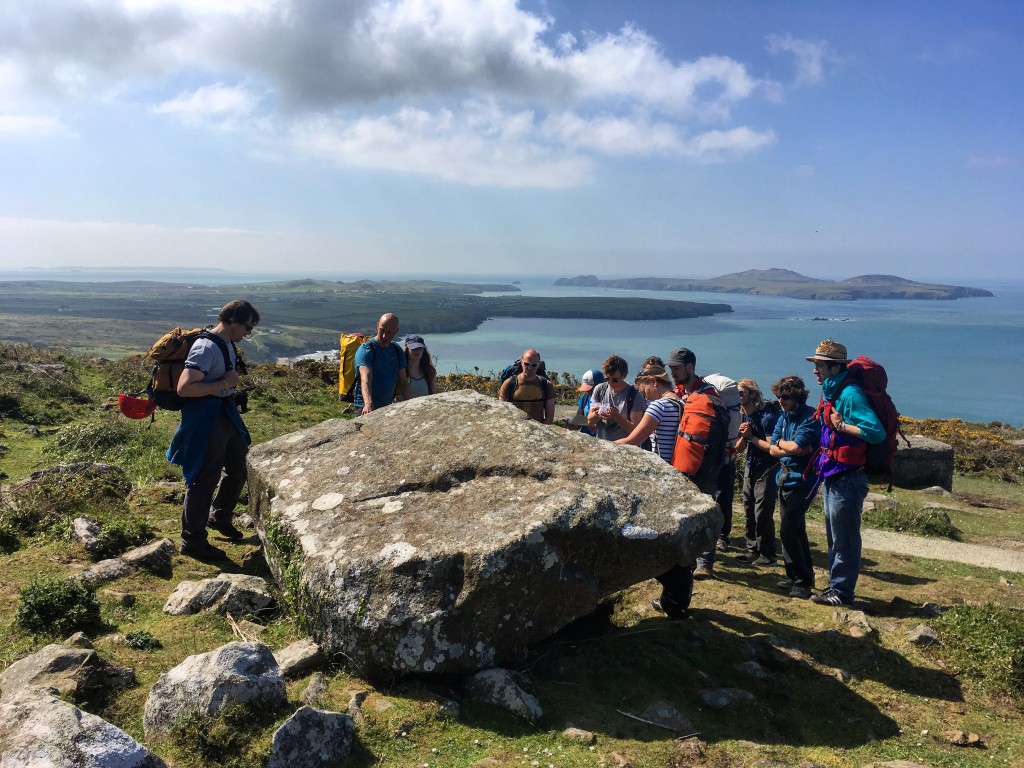
TYF Guides during the coastal walk training and sign off I was running for them in Pembrokeshire
First up I was with TYF, a well established outdoor adventure company in St Davids. One of the activities they offer is coastal path walks. In this environment the navigation, terrain and remoteness aren’t particularly extreme, and for a lot of staff who maybe aren’t “into” walking, the national governing body awards might be unattainable in the short term. I would personally rather see everyone go through the training, consolidation and assessment process of the official NGB’s, but given a rigid framework and a robust training and sign off process, with a little up-skilling, they can be proved competent to lead these session. So we spent the day looking at how to teach simple navigation, advancing our own nav skills, risk assessing and risk minimising, emergency procedures, exploring the terrain we could visit, as well as looking at the interesting fauna, flora and historical sights along the way.
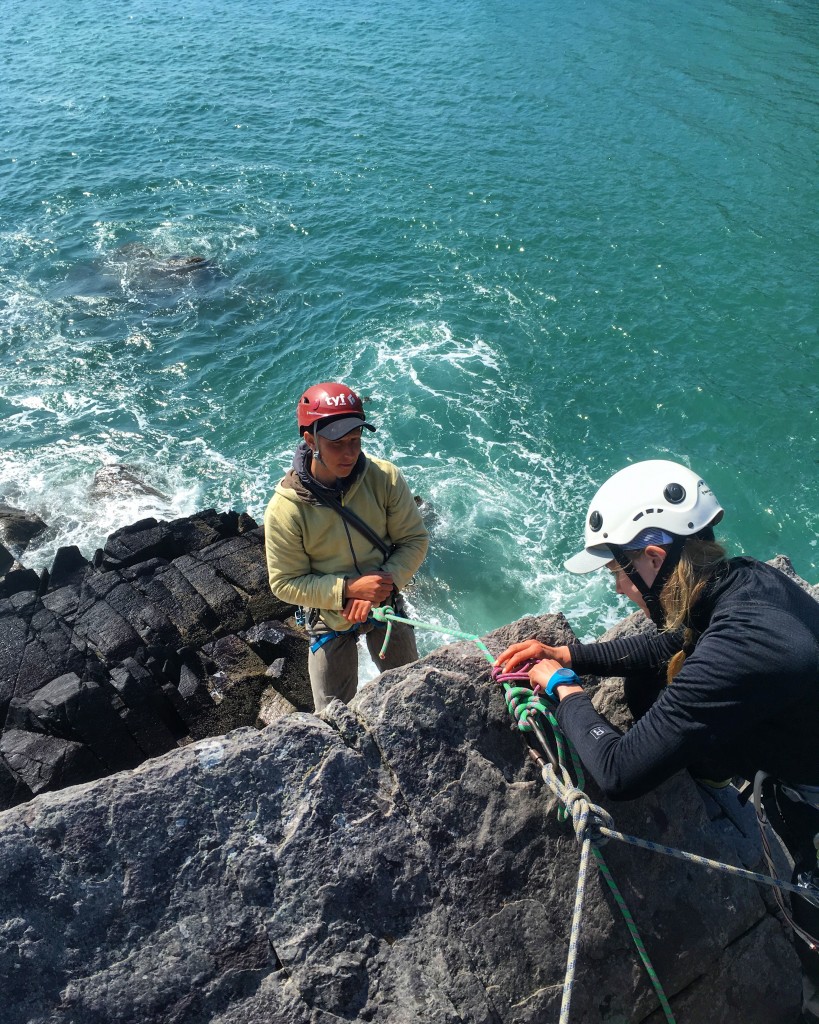
TYF Guides practising their rescue skills on a Technical Advice day I was running for them in Pembrokeshire.. Rachel setting up a hoist on Dec here…
My second day with TYF was split into two parts, and today’s focus was climbing. Firstly we were training the less experienced staff that didn’t hold any formal climbing qualifications in how to run bouldering sessions and kit groups up. Giving them the skills so they can pass on the important stuff to the clients whilst the lead instructor is setting the climbs up. We looked at all the vital basic techniques of movement and body position alongside risk management, spotting and getting all the kit on properly. Once the climbs were set up we looked at the assistants managing a rope, tying novices in and belaying them up and down – as well as getting them all doing loads of climbs! For a couple of staff it was their first time!
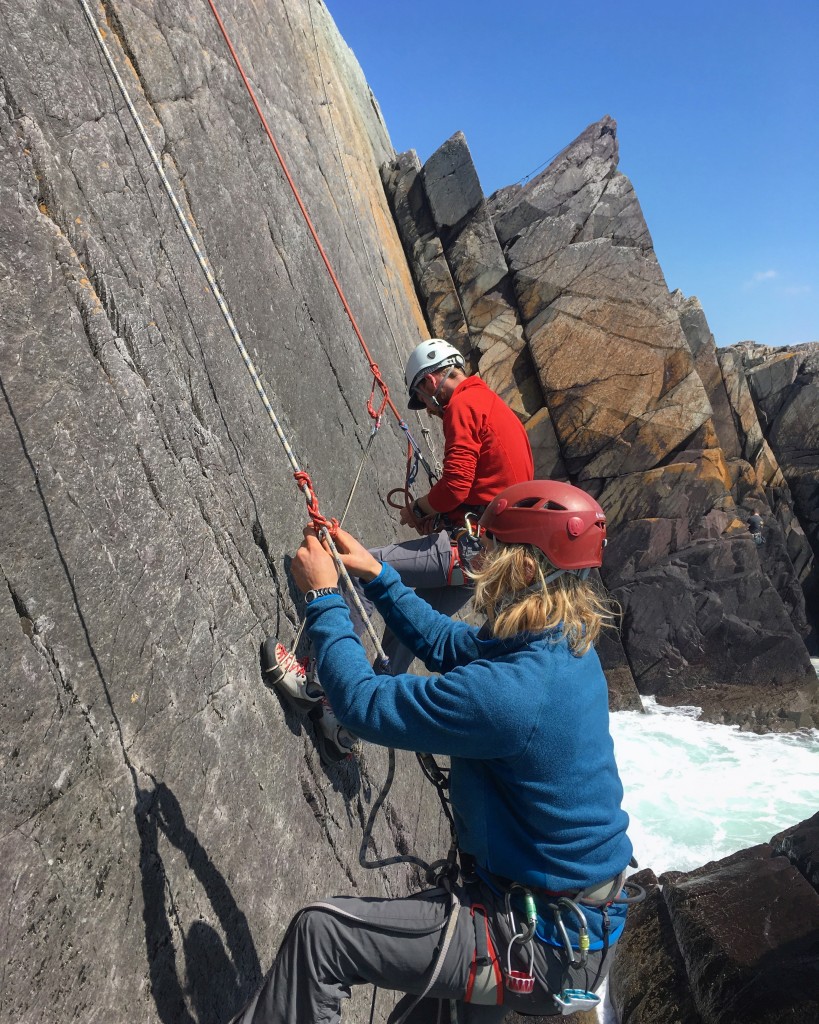
TYF Guides practising their rescue skills on a Technical Advice day I was running for them in Pembrokeshire.. Matt and Tom ascending the rope!
The second half of the day was spent with the Single Pitch Award holders. The SPA is the base level climbing qualification for running outdoor sessions for groups, and to gain it the staff will have done a robust training, consolidation and assessment process all building on their personal experience. However, this award is for cliffs where you can walk to the bottom and the top, with no worries of the sea below! So in the environment of Pembrokeshire – where most of our cliffs are “sea-cliffs” – a little Technical Advice is required! The new skills I train staff in are altering their set-ups to suit the environment, rescuing stuck climbers (hoists), getting down to injured climbers and getting back up the rope again. It doesn’t sound a lot but if it’s totally new to the guys then there is a lot to learn with very real consequences if you mess it up! With the TYF staff we spent the day training and refreshing knowledge and I’ll go back in a couple of weeks to assess them on the skills required to work on single pitch sea-cliffs!
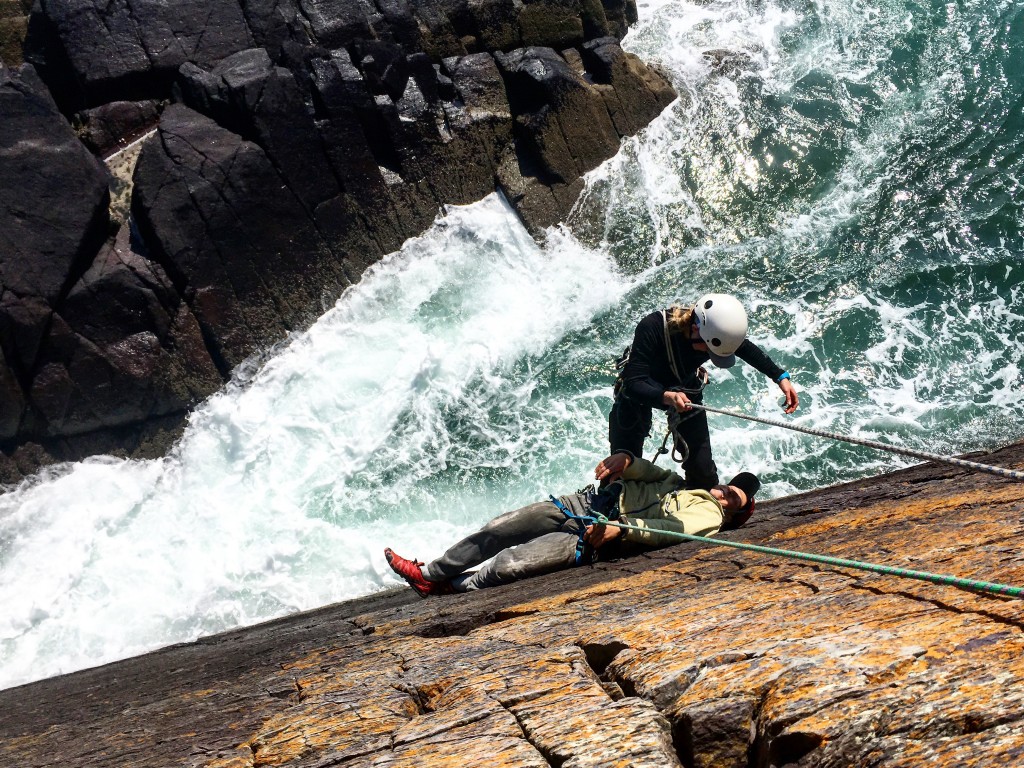
TYF Guides practising their rescue skills on a Technical Advice day I was running for them in Pembrokeshire.. Rachel helping an “unconscious” Dec!
The next day I was out with Dragon Activity Guides, a small but up and coming company in Pembrokeshire. As they are a small team and have been through the coastal crag training and sign off process many times over the last 5+ years, they had a refresher of the skills in the morning, and an assessment in the afternoon. In between we visited the crags that they might use with groups, to apply their risk assessments, look at the set-ups and group management issues at each. When it came to their assessment, I threw the scenario of an unconscious climber stuck on the crag, with the sea and swell to high below meaning to lower them down was impossible.
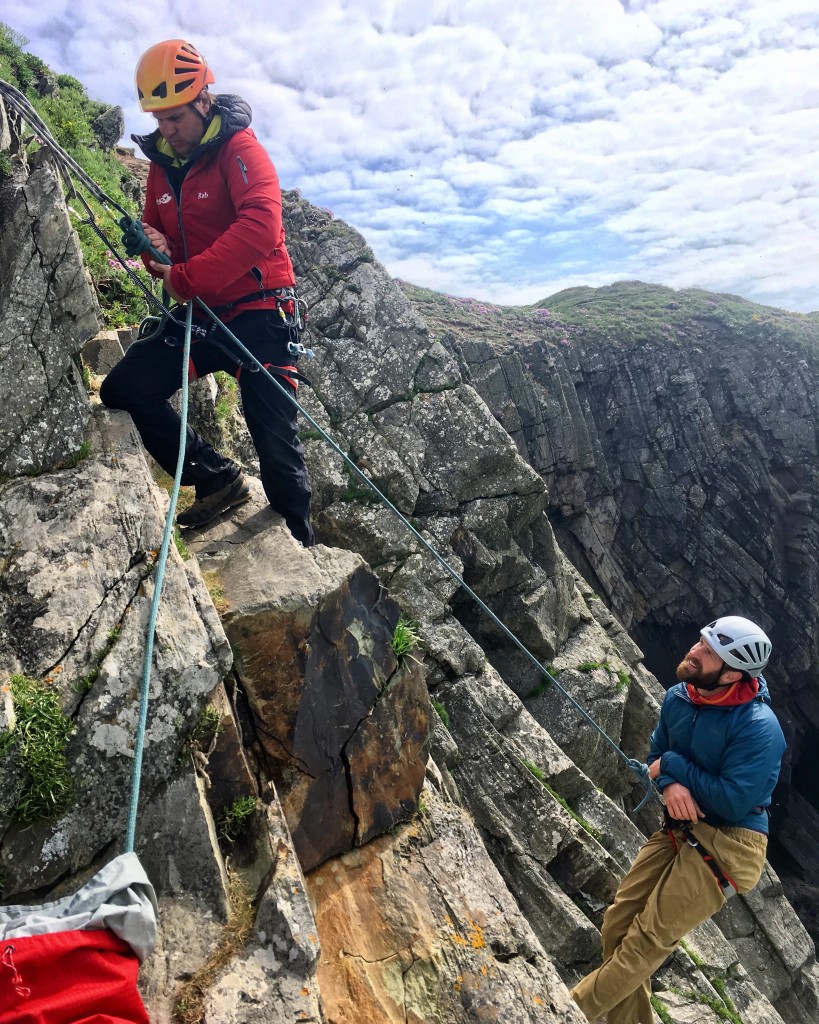
Dragon Activity Guides practising their rescues on a Technical Advice day I was running for them in Pembrokeshire – Paul tying off Alun here..
This meant tying off the belay, dropping a fixed line and abseiling down to them, giving them any possible first aid and ensuring they were held upright in a chest harness before having to ascend back up the rope to start the next part of the rescue. Even though they would take gri-gri’s and ascenders with them when working I make them do it the hard way on Italian hitches, belay devices and prussics!
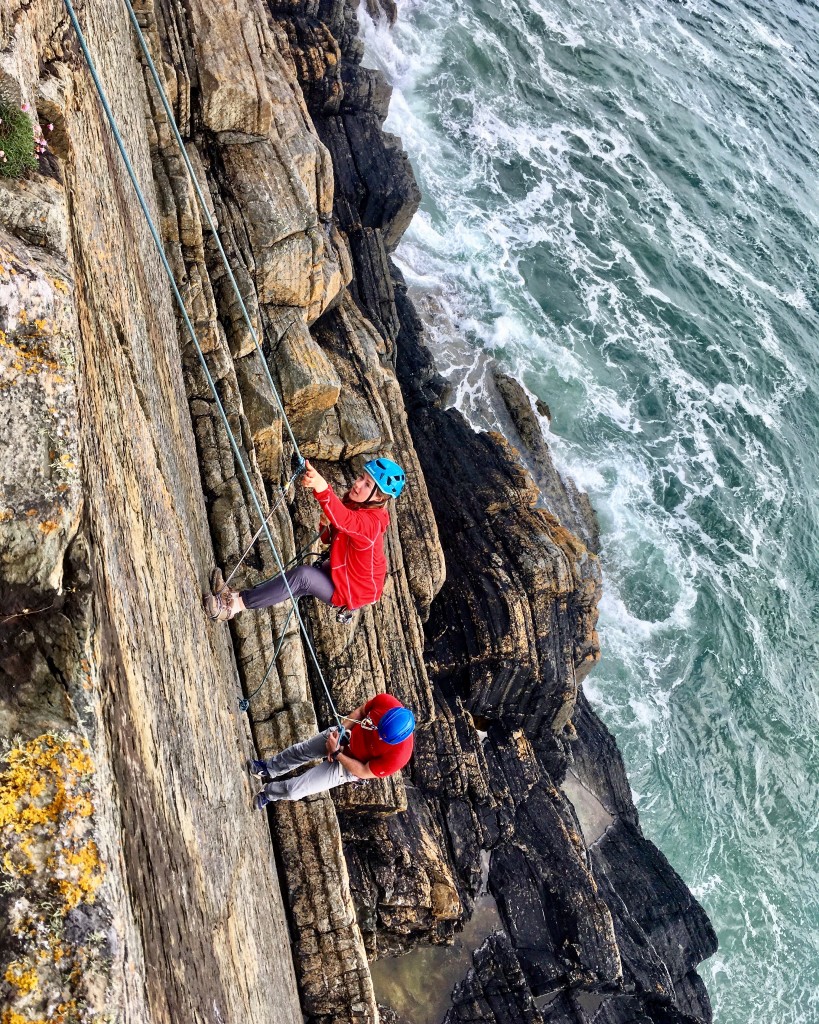
Dragon Activity Guides practising their rescues on a Technical Advice day I was running for them in Pembrokeshire – Sara ascending the rope after putting an “unconscious” Nik in a chest harness.
Once back at the top of the crag they have to hoist the injured climber without any assistance at all. Needless to say there were a few red faces and a bit of sweat at the end of it all! Everyone performed well and I have no problem in signing them off to work on the specific coastal crags that they use, for another’s year at least until the next day of Technical Advice!
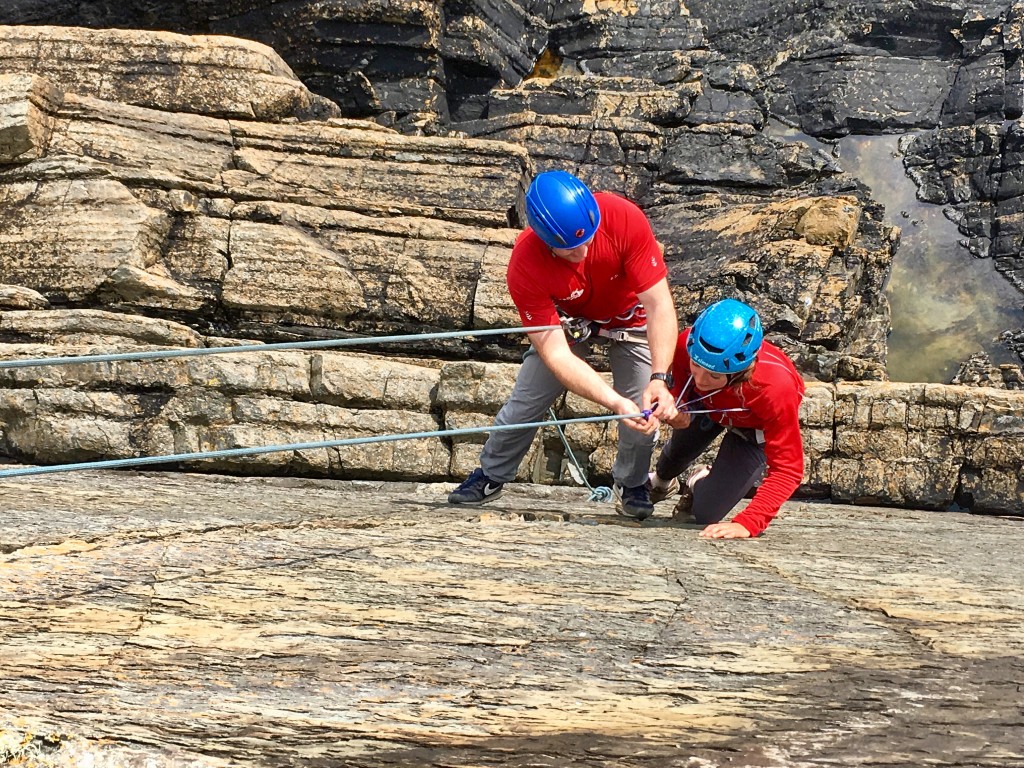
Dragon Activity Guides practising their rescues on a Technical Advice day I was running for them in Pembrokeshire – Nik repaying the favour and rescuing Sara!


